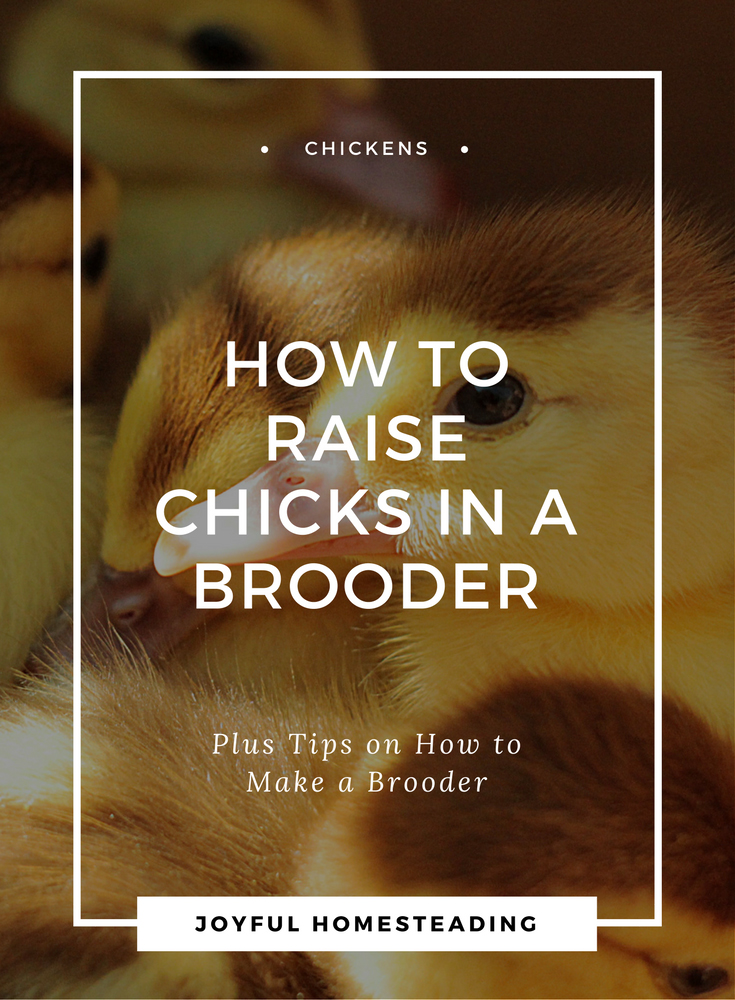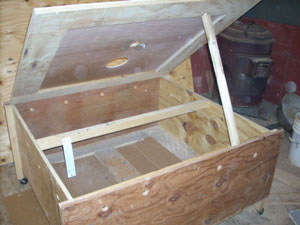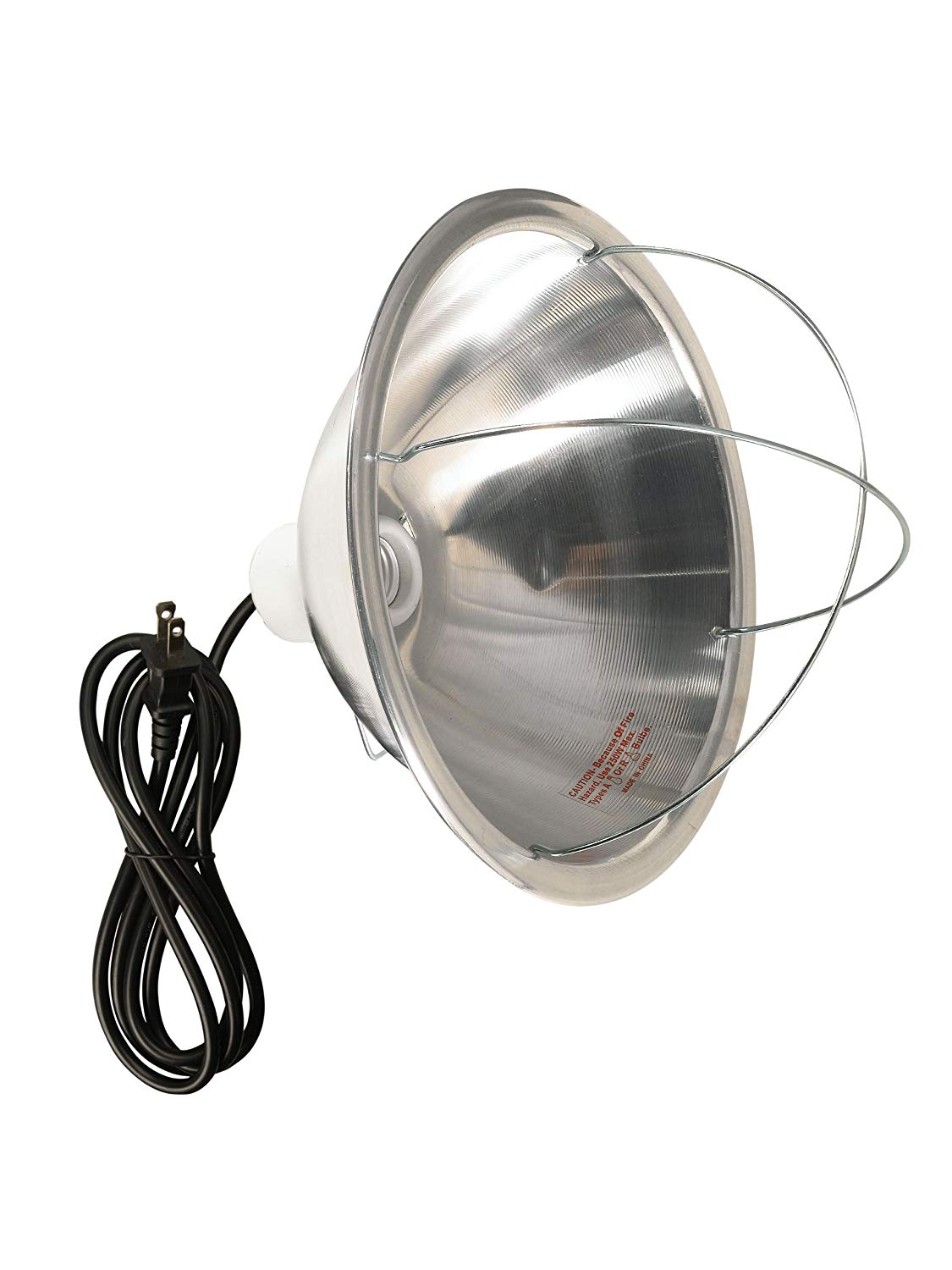How to Raise Chickens from
Chicks in a Brooder for the Best
Possible Care
How to raise chickens is a question many people ask when thinking about pursuing self-reliant living. Few things in life are better than homegrown, healthy eggs and chicken meat. And fortunately, chickens are some of the easiest critters to raise, but there are a few crucial things to know, especially as most people start out by raising baby chickens. Here are some tips.

Brooder Required
|
Just as you wouldn't leave a newborn out in the cold to fend for himself, your chicks will need special protection during the first few weeks of their lives, until they get their full feathers. |
 |
When a baby chick in nature gets cold, he runs to his mama, who spreads her wings and covers him for warmth. Since your baby chicks won't have a mama, you will need to keep them in a brooder, a box that will protect your chicks from the chill and keep them warm.
How to Raise Chickens
The Basics for Your New Chicks
So one of the basics in knowing how to raise chickens is providing a safe and warm environment for your chicks. In addition to warmth, your hatchlings will also need protection from the wet and predators, plenty of space, ventilation and no drafts.
Until your babies are four weeks old, you will need to keep them in a box that is large enough to provide half a square foot of room per bird. Don't give them more space than that, or it will be hard for them to stay warm.
Your birds will also need a source of heat for the first few weeks of their lives. A light bulb - or better yet, a brooder lamp - is an excellent source of this heat. Also keep a thermometer in your brooder.
Your fledglings need a consistent temperature of 95 degrees Fahrenheit for the first week. Keeping a thermometer in the brooder box will help you know if your chicks are warm enough.
This is extremely important. Until your babies lose their down and get real feathers, they cannot stay warm by themselves.
You must gradually acclimate them to the cooler temperatures, so after the first week, lower the temperature in the brooder to 90 degrees.
Every week after that, reduce the temperature by about five degrees until the temperature in the brooder matches that of the temps outside. Be careful with the temperature in your brooder. If it gets too cold, your chicks could develop diarrhea and get sick.
Plus, if they get cold while they are sleeping they could pile up on each other and smother. Likewise, if it gets too hot in the brooder, your chicks will die. You can tell if your chicks are comfortable by observing them. If they’re contented, they’ll wander wander throughout the brooder while awake and sleep side by side.
Building a Nursery for Your Babies
|
A crucial part of knowing how to raise chickens is knowing what makes the best nursery for your chicks. The best place for your fledglings is a large box about one to two feet high. |
 This is the brooder we made, and it worked well. |
How big it needs to be will depend on how many chicks you plan to have.
We ordered 50 hatchlings, so we made our box six feed long by six feet
wide and two feet high.
We hung a thermometer from a cross beam so we could check the temperature inside the brooder quickly and easily.
We also hung a light bulb from a cord. When it got too warm, we raised the bulb and likewise lowered it when it got too cold.
We provided two waterers that we got from a feed supply store. My husband made the feeder out of PVC pipe. He also drilled plenty of holes near the top of the box to provide ventilation. The opening at the top also allowed a light bulb to hang from a cord.
Rick put wheels on the bottom so it could be moved easily. We then lined the box with pine shavings we obtained at a local feed supply store and then covered the shavings with newspaper to discourage the chicks from eating the shavings until they learned to eat their food.
Special Treatment
Many people who want to know how to raise chickens are planning to order their chicks from a hatchery. If you plan to go that route, plan on giving them special attention as quickly after you receive them as possible.
Your babies can spend up to two days in transport and have been without food or water. To prevent them from going into shock, give them a homeopathic remedy called Arnica. Like many homeopathic remedies, Arnica is available from your local health food store. Try to obtain a remedy of 30C. The remedy comes in small pellets. Crush three to six pellets between two teaspoons.
Then add the crushed pellets to your hatchlings' water. Place the water container in your brooder and then dip each chick by its beak into the water. That way they learn to drink water right away. Your chicks can go without water up to 48 hours after they hatch, but it is stressful for them, and the sooner you give them water, the better.
Keep Things Clean
Another crucial aspect of knowing how to raise chickens is cleanliness. The old adage, "an ounce of prevention is worth a pound of cure" was never more true than when it comes to raising chickens, especially when they are chicks. So many diseases can be avoided by providing clean litter for your hatchlings and changing it frequently.
However, until your little ones are eating well, cover up the litter with paper towels to keep them from eating the litter by mistake. Change the paper toweling frequently to keep things clean. Likewise, change their litter frequently. Add that wonderful, dirty litter to your compost pile.
It's a good idea to put your babies on litter from the very beginning. That way, they'll gradually become immune to coccidiosis - a nasty intestinal disease. The litter also helps keep them warm and dry and absorbs their droppings.
The best kinds of litter are wood shavings (pine not hardwood), peat moss, crushed corncobs, vermiculite and crushed cane. We used wood shavings that we obtained from our feed supply store.
Learn more about how to raise chickens here.











New! Comments
Have your say about what you just read! Leave me a comment in the box below.